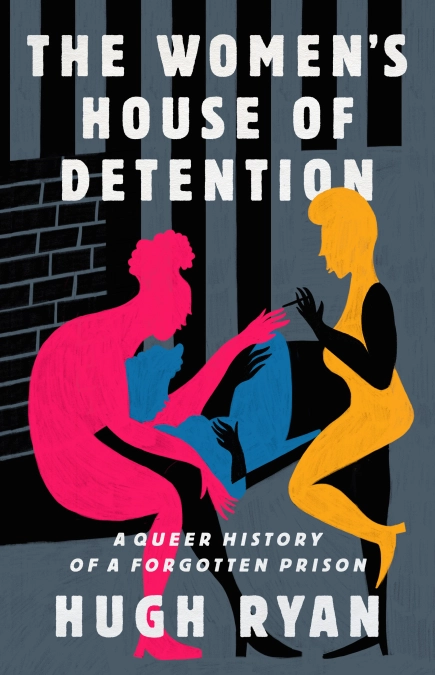But the heart of the mission is the buildings themselves. On the website, for instance, users can uncover the opulent High Modernism of the apartment and display case Paul Rudolph built for himself on Beekman Place—and then discover that its gay roots go much further back, as the home of First Lady of the Theater Katharine Cornell and her director-producer husband Guthrie McClintic. (Both were gay and united in an early example of so-called lavender marriages.) Such through lines challenge our understanding of both desire and design, serving as timelines for liberation. “The work they’re doing to show the cultural importance of these spaces,” Ryan says, “provides an architecture in and of itself for how we remember queer history. These places matter.”
Month: June 2022
Queer Landmarks Are Everywhere—and This Group Is Working to Keep Them In Plain Sight
June 28, 2022
By: Jesse Dorris
Gay and trans history wasn’t always visible. The NYC LGBT Historic Sites Project has set out to change that

At this moment in our nation’s history, when LGBTQ+ Americans face erasure—whether through refusal of bodily autonomy and reproductive health care or censorship in classrooms and libraries—it’s never been more important to assert the simple fact of queer existence. Founded in August of 2015, the NYC LGBT Historic Sites Project has identified and contextualized hundreds of locations where queer people have made their mark since the founding of the city in the 17th century to the turn of the millennium. From the apartment building in which Ronald I. Jacobowitz lived when he founded Gay Men of the Bronx in 1990 to the Beach Haven Bar, which in the late 1970s was Staten Island’s only lesbian watering hole, the project proves queer people have always been a part of New York City.
Plotted on an easily navigated website, the project pinpoints major landmarks like the West Side Tennis Club in Forest Hill Queens, host of the 1977 U.S. Open in which Renée Richards fought for and won the right to compete as the woman she was. It locates schools throughout the city named for LGBTQ+ heroes (including Langston Hughes and Lorraine Hansberry), and treasure troves like the Lesbian Herstory Archives in Park Slope, Brooklyn. And although Manhattan’s mainstream sites of cultural production, like almost every Broadway theater, have their moment in the spotlight, the list rightfully pays respect to the quarters that marginalized communities made for themselves, including Harlem’s cruisy Mt. Morris Baths and South Slope’s Transy House, the collective shelter and activist center Sylvia Rivera called home.

Such scope is by design, says Columbia University’s professor of historic preservation Andrew Scott Dolkart. He cofounded the project with consultant Ken Lustbader and Jay Shockley, senior historian at the NYC Landmarks Preservation Commission. “We want to make the point that LGBT history is American history. We want to make an invisible history visible,” Dolkart says. “So we’re looking at places where cultural events took place because we’re particularly interested in the impact that queer people have made on American culture.”
For historians like Hugh Ryan, author of When Brooklyn Was Queer and the new The Women’s House of Detention, the project’s focus allows the public to better understand the people within these historic spaces. “When you have a sense of the people who use a building—what the light felt like [to them], and the door they went through—it makes them human,” he says. “It is an experience that connects us emotionally, physically, directly to our ancestors. And those moments are important for marginalized histories where so little is preserved and passed down.”

After first meeting while in the Columbia Historic Preservation Program in 1994, Dolkart and his cohort helped celebrate the 25th anniversary of the Stonewall uprising by helping write the first guide to gay and lesbian sites in New York as members of the Organization of Lesbian and Gay Architects + Designers. Five years later they wrote the National Register of Historic Places nomination for the Stonewall bar and its surrounding area for its role in fostering the modern Gay Rights movement. “And then about five years ago,” Dolkart says, “the National Park Service was offering grants for underrepresented communities to expand the scope of listings on the National Register.” The trio applied and got the grant, which helped to birth the project itself.
Today, the NYC LGBT Historic Sites Project is part of the Partner Program of the Fund for the City of New York, a 501(c)(3) nonprofit, with foundational support from organizations including the J.M. Kaplan Fund and corporate sponsors like ConEd and American Express. It offers walking tours through gay enclaves like Greenwich Village, sites of queer excellence like the Met, and ancestral resting places like Brooklyn’s Green-Wood Cemetery. Since 2019, it has offered NYC public schools video segments and instructional materials on LGBTQ+ history throughout the boroughs.
The Women’s House of Detention: A Queer History of a Forgotten Prison
July 12, 2022 | 6:30PM - 7:30PM
Jefferson Market Library, New York Public Library
425 Avenue of the Americas
View on Google Maps
 Join NYC LGBT Historic Sites project manager Amanda Davis at Jefferson Market Library on Thursday, July 14, part of a week of in-person festivities organized by the New York Public Library: The Jefferson Market Jubilee.
Join NYC LGBT Historic Sites project manager Amanda Davis at Jefferson Market Library on Thursday, July 14, part of a week of in-person festivities organized by the New York Public Library: The Jefferson Market Jubilee.
Amanda will appear with author Hugh Ryan for a discussion on the Women’s House of Detention, the former occupant of today’s Jefferson Market Garden and subject of Ryan’s latest book: The Women’s House of Detention: A Queer History of a Forgotten Prison.